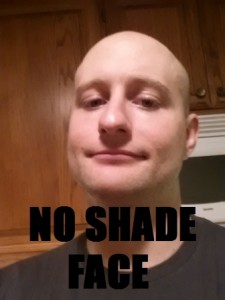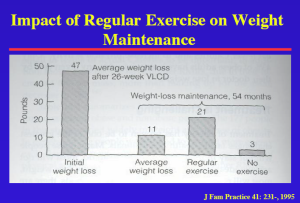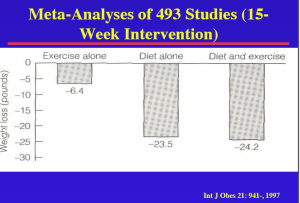Someone asked me recently how they think nutrition science and practice will change in the future. Outside of the ‘let’s try a diet’ like we may try a new fashion choice or hairstyle and other non-science based nutrition diets of the year (keto and vegan are in right now as this is written, two completely polarized diets), there are some areas nutrition practice could improve from an evidence-based standpoint.
And I’m not talking nutrigenomics. That has a long way to go before it will be evidence based for clinical practice. I’m talking the basics: how we determine calorie needs of people. That is an area of practice that scientists and grants should go toward investigating. I’m saying this 4 years into my private practice.
We cannot accurately estimate exercise expenditure (EEE), excess post exercise oxygen consumption (EPOC), non exercise activity thermogenesis (NEAT), and the thermic effect of food (TEF) in clinical practice. These, along with the RMR or resting metabolic rate, represent total energy expenditure (TEE).
The most accurate way to do so is to measure RMR with indirect calorimetry, which, while the gold standard, is still indirect because it measures oxygen consumption and infers caloric expenditure rather than directly measuring caloric expenditure. Then using the RMR, we use an activity factor to estimate activity.
Unfortunately, the activity factors create an estimate of an estimate. We really don’t know how many calories, with accuracy, someone burns during exercise and how that affects the rest of the equation.
There are probably interrelations between each of the above factors (EEE, EPOC, TEF, RMR, NEAT) based on how much the other contributes to TEE. Without indirect calorimetry, the Mifflin-St. Jeor predictive equation is often used in adults, which is an estimate of RMR, which adds another layer of estimates to our assessment methods for determining caloric needs.
The current paradigm for weight management involves the clinician assessing estimated caloric needs and creating a deficit for desired weight loss. As many dietitians and other weight management professionals realize, it isn’t as simple as calories in = calories out because the body has its own thermostats that determine what rate of consumption of calories happens.
We don’t know how much metabolic compensation occurs, let alone behavioral compensation we can assess via questionnaire/discussion. Examples of possible metabolic compensation that could occur include changes in thyroid production, resulting in hypo- or hypermetabolism: the RMR can go up or down with or without various levels of activity.
Another example is when dietary caloric intake changes, RMR can change, such as go up or down. There also seems to be a prioritization of conservation of energy toward fueling exercise metabolism (movement and recovery from movement or EEE and EPOC, respectively) than there seems to be to fueling RMR.
This happens in both men and women, but notably in women when hormone function supporting the menstrual cycle is disrupted with excessive exercise relative to caloric intake; however, it is recognized as RED-S now, relative energy deficiency syndrome in sport and exercise, inclusive of men, as it was formerly just referred to as the female athlete triad.
Then, there are behavioral compensation patterns: does someone sit around more, nap, or do any other energy conservation processes when engaging in a dietary caloric deficit and exercising. How much metabolic adaptation or adaptive thermogenesis occurs, and how can we measure that more accurately than just looking at how it affects weight or energy levels to exercise?
How much does reducing calorie intake impact the intensity and volume of someone’s exercise sessions? People start to conserve energy during exercise both behaviorally and metabolically.
Current guidelines suggest exercise is ALWAYS a good thing to do throughout all stages of weight gain/loss/maintenance, but considering how many confounding, immeasurable factors exercise throws into the TEE equation, perhaps they will revise the equation in the future and change policy or guidelines to streamline interventions.
That is, maybe guidelines will reflect a better understanding of goal setting for prioritization of exercise or weight management, rather than the current guideline to do more of both at the same time, ie diet and exercise more.
Perhaps guidelines will change to describe what kind of exercise and how much is recommended during various stages of weight management. Current guidelines are vague and recommend the more the better when it comes to aerobic activity.
It is basically considered sacrilege to not recommend exercise as part of a weight loss program, since it is part of all official guidelines.
Don’t get me wrong, exercise is one of the healthiest things you can do for your body, but it really throws a twist into predicting energy needs and, along with just general activity (NEAT), exercise is the biggest reason for changes in energy needs.
Age doesn’t seem to affect energy needs as much as changes in energy needs occur with changes in volume of movement. If you look at the Mifflin-St. Jeor Equation and plug in various ages vs various activity levels, the activity level changes are the biggest component to inaccurate estimates of energy needs.
Currently, all we have are simple guidelines like “sedentary, 1-3 times per week exercise, 3-5 times per week exercise,” etc., without a definition of how long that exercise is, how intense that is, who the reference person is for those activity factors (150 lb man, 120 lb woman, or 315 lb man?), whether they are walking, swimming, lifting light weights, or heavy weights. The activity factor is an overly simplistic estimate of energy expenditure as it stands now.
Don’t get me started on the accuracy of tech devices that claim to measure your calorie burn from exercise. Unless they are measuring your total body heat production constantly throughout the day, they are not accurate.
I had a cyclist heatedly argue with me that her device was EXACTLY measuring her exercise expenditure. I feel sorry for anyone who purchased an expensive exercise expenditure measuring device. You were marketed to. We don’t have accurate technology for this.
Even a physics-proven mechanical energy estimate will not prove true from a physiological energy cost standpoint due to the aforementioned factors of how the body can conserve energy internally when it needs to by upregulation and downregulation of various metabolic pathways.
It happens all the time when the hypothalamus detects low energy availability and shuts down less important processes, such as reproduction in women, due to all the energy expenditure from exercise. This lowers RMR to conserve energy. It also leads to low bone density due to lack of hormone production.
Your heat production can change as a result of exercise the rest of the day. Is the device measuring you at one part of your body, or all over? What is that device missing? How does it determine how many molecules of ATP are produced aerobically vs anaerobically in your body, and how much protein breakdown and buildup must be done as a result of activity, which requires energy itself?
Aside from those issues, then there are issues on the food intake side. There is a trendy argument on if a calorie is a calorie in terms of food.
The idea is that processed food calories take less effort in absorption than whole foods take, so using a bomb calorimeter isn’t the most accurate way to measure caloric intake from food.
Then there are issues with gut bacteria: certain gut bacteria are more efficient in salvaging energy from fiber that reaches the colon whereas other strains are less efficient.
We don’t know the extent of how much these contribute to significantly varying levels of caloric intake or if they are trivial and academic.
Hopefully, science investigates and develops a better tool for clinical practice so we can have better answers to these questions in the future. For now, we are left with clinical judgment, theory, and more indirect measures and estimates of metabolism.
Share on




